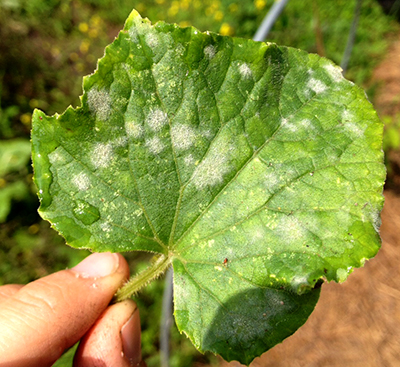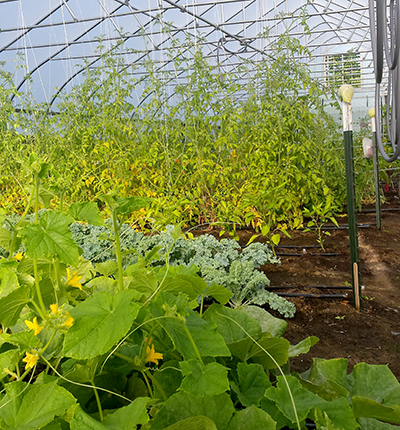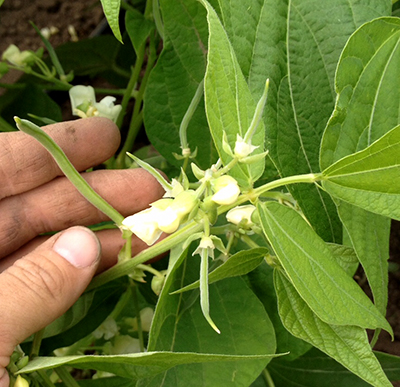Flint, Michigan area urban agriculture report – July 22, 2015
Updates about urban and semi-rural small scale diversified vegetable farm fields, hoop houses and market gardens in the Flint area.

Weather
According to the Michigan State University Enviro-weather station in Flint, Michigan, temperatures for the past week ranged from a low of 48.6 degrees Fahrenheit to a high of 87.3 F. We are at 1,425 growing degree days (GDD) base 50; our season is running a few days ahead of normal for GDD totals. The rainfall total for the year to date in Flint, Michigan, is 13.65 inches; we had 0.72 inches recorded at the Flint Enviro-weather station in the past week. With the weather trending warmer and dryer than in recent weeks, we have a reprieve in the weather conditions which promote disease development in our vegetable crops.
Crop reports
According to research done in the hoop houses located at the MSU Student Organic Farm and educator observations from the field, cool and warm season crops are continuing to be harvested out of area hoop houses due to season extension technology at this time of year. In Flint, Michigan, area hoop houses and market gardens, growers are identifying pests and diseases, harvesting many crops, weeding, mulching, removing spent crops and starting fall plantings of carrots, radishes and other brassicas, bush beans and Asian greens. On one area farm, an early July-planted buckwheat cover crop is up and growing. Due to high disease pressures we have had this season, growers are increasing air flow in area hoop houses by pruning up tomatoes and removing weeds from the sides, which helps in inhibiting disease development.
Cabbage worm, aphid, slug, cucumber beetle and squash vine borer damage on early plantings of summer squash has been noted. The huge tomato hornworm adult moth was spotted in one grower’s hoop house, likely laying eggs on tomatoes, as well as four-lined plant bug damage on hoop house basil. The predatory robber fly has been identified in farm and community gardens this week. Powdery mildew on cucumbers and early blight on tomatoes has appeared. An online MSU resource, “A Pocket Guide to Common Diseases in the Urban Garden,” published in 2013, may be helpful to urban producers with the current disease concerns in our state.

Powdery mildew on cucumber.
Going to area farmers markets now
According to a Michigan State University Extension food systems educator, area growers are harvesting cherry tomatoes, heirloom tomatoes, beets, basil, scallions, summer squash, kale, carrots, cucumbers and green peppers from area hoop houses this week. Field harvest includes eggplant, Swiss chard, kale, snap peas, kohlrabi, salad mix, cauliflower, broccoli, kale, green beans and garlic.

Many crops are ready for harvest in area hoop houses.

Green beans in the field ready for harvest.
For helpful information on how to select, prepare and safely preserve Michigan’s bounty of fresh, locally grown vegetables, fruits, ornamentals, meats, eggs, nuts and fish, check out Michigan Fresh. Available for free at the Michigan Fresh website are current fact sheets on over 50 crops, general food and ornamental gardening information, food preservation information, recipe cards, a seasonal harvest availability guide and a guide for donating fresh produce.



 Print
Print Email
Email
